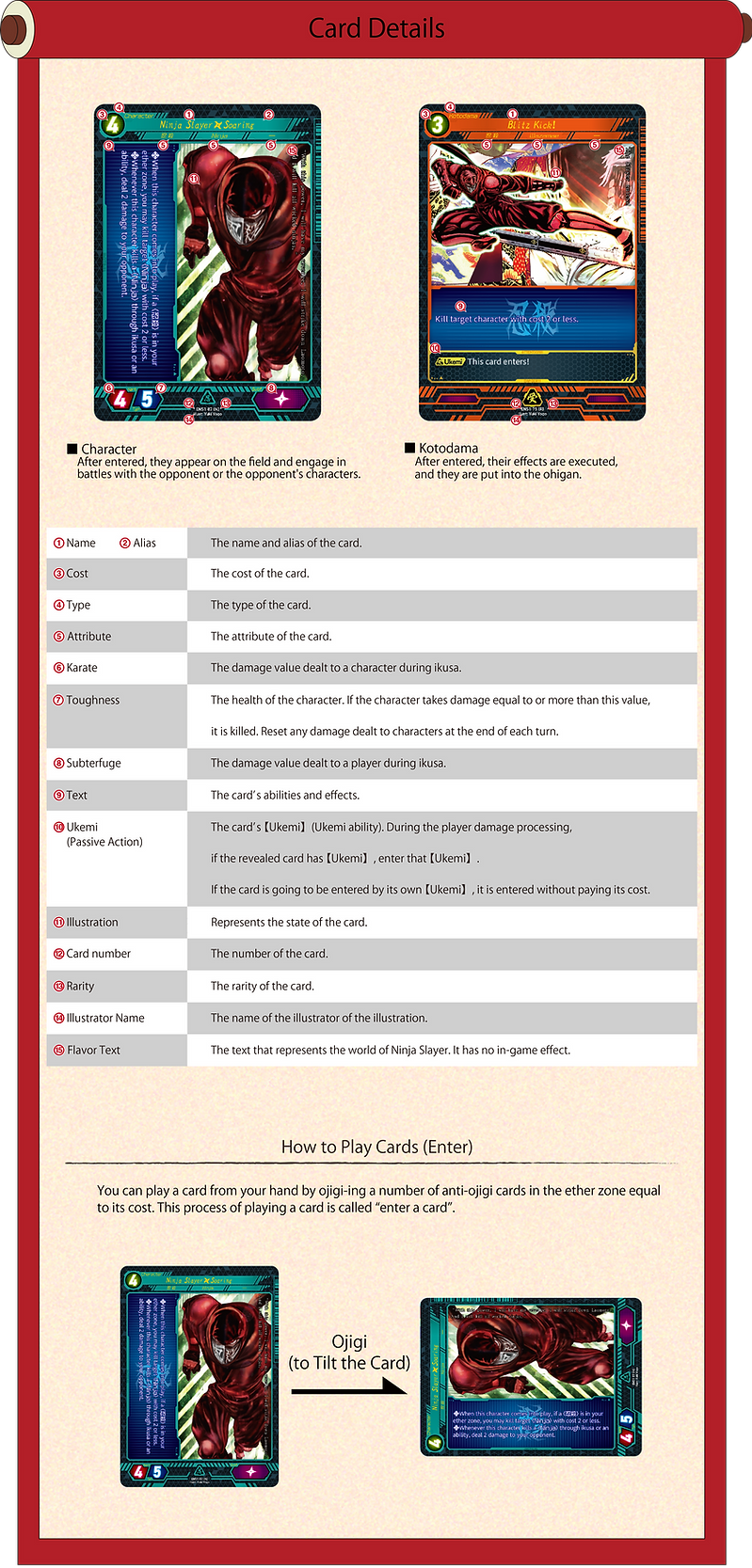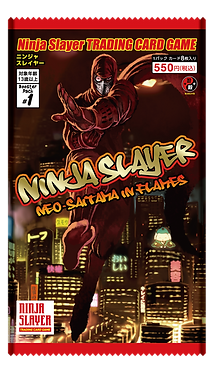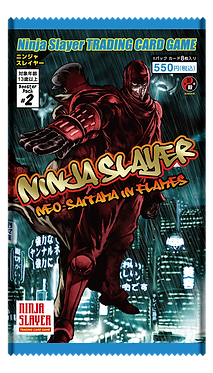
Blitz Shield Mode
一、How to Build a Deck
・A deck has 40 cards opened from 5 packs. You can't have any other cards in a deck.
・You can't have any other cards in a deck.
・You may have any number of cards with the same name and alias in a deck.
二、How to Play
The game begins with the first player's turn, and players alternate between their turns and
their opponent's turns until the winner is decided.
三、Winning the Game
・The first player who deals 10 damage to their opponent wins the game.
・If the player runs out of cards in their deck, their opponent wins the game.
Constructed Mode
一、How to Build a Deck
・A deck has exactly 50 cards.
・You can have up to 4 cards with the same name and alias in a deck.
・You can have up to 16 cards with 【Ukemi】 in a deck.
二、How to Play
The game begins with the first player's turn, and players alternate between their turns and
their opponent's turns until the winner is decided.
三、Winning the Game
・The first player who deals 10 damage to their opponent wins the game.
・If the player runs out of cards in their deck, their opponent wins the game.

1. Each player shuffles their deck and places it faces-down in their Deck Zone.
2. Draw 4 cards from the top of your deck and put them into your hand.
3. Players play Rock-Paper-Scissors. The winner goes first.
4. Players perform the aisatsu (greeting).
The player who goes first performs ojigi (bows), and greets by saying
“Domo. I am 〇〇 (their nickname or handle) .”
Then, the player who goes second performs ojigi too, and greets by saying
“ Domo, 〇〇-san, I am ▲▲(their nickname or handle).”
5. After the aisatsu, start the game.
* The aisatsu and ojigi mentioned in step 4 are general greetings and bows. Please be careful not to attack your opponent with these aisatsu.
一、Start Phase
1. Anti-Ojigi Step
Change all cards in your field and ether zone that are in an ojigi (horizontal) state to an anti-ojigi (vertical) state.
If there are any effects that trigger at the start of the turn, trigger it.
2. Draw Step
Draw two cards.
* The player who goes first draws only one card on their first turn.
3. Ether Step
You may put a card face-down and in an anti-ojigi state into your ether zone from your hand. This is optional.
* You may always enter a kotodama or ability whenever you have priority.
二、Character Phase
You may enter any number of characters by paying their costs. If there are no cards you wish to enter, proceed to the next phase.
* You may always enter a kotodama or ability whenever you have priority.
三、Ikusa Phase
1. Ikusa Start Step
If there are any effects that trigger at the start of the ikusa phase, trigger it.
2. Aisatsu Phase
Perform the processes from (Ⅰ) to (Ⅲ) in the aisatsu phase any number of times.
(Ⅰ) Aisatsu Target Selection Step
Choose a character you control, then choose a character your opponent controls or your opponent as the aisatsu target. If there are any effects that trigger when aisatsu, trigger it.
(Ⅱ) Interrupt Step
The aisatsu recipient may change the aisatsu target to a character they control with Interrupt or Improved Interrupt.
* A character whose aisatsu target has already been changed this turn can't be selected again.
(Ⅲ) Ikusa Damage Step
If the aisatsu target is a character, deal damage equal to the karate of the aisatsu character. If the aisatsu target is a player, deal damage equal to the subterfuge of the aisatsu character.
3. Ikusa End Step
If there are any effects that trigger at the end of the ikusa phase, trigger it.
* You may always enter a kotodama or ability whenever you have priority.
四、End Phase
If there are any effects that trigger at the end of the turn, trigger it.
* You may always enter a kotodama or ability whenever you have priority.
After that, remove all effects from this turn and reset all damage dealt to characters, then pass the turn to your opponent.
Priority and Resolving a Card
After the start and end of each phase and step, the player whose turn it is (hereafter referred to as the turn player) gains priority.
The player with priority may perform any of the following actions any number of times and in any order. If they don't want to perform any action, they pass priority to their opponent. :
1. Entering a character card
* Only if they are the turn player and only during their character phase.
2. Entering a kotodama card
3. Entering an ability with costs
The entered card or ability is placed in the kotodama space.
(Kotodama space is the seamless fusion of text-based cyberspace, the invisible ether permeating reality, and the mystical collective unconscious. It isn't on the play sheet)
Whenever both players pass priority consecutively, if there are any cards or abilities placed in the kotodama space, resolve the last one placed there, and the turn player gains priority again.
This repeats until there are no cards and abilities left in the kotodama space.
While there are cards or abilities placed in the kotodama space, the player with priority can't enter any character cards.


©Ninj@ Entertainment / ©Yuki YOGO 2024 / ©Yoshiaki TABATA 2024
